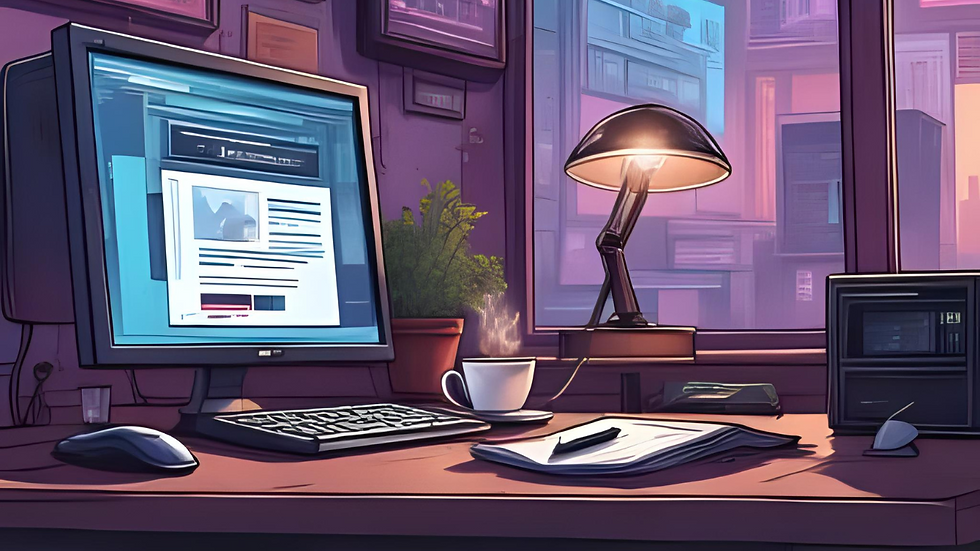The Recipe of Horror Games
- CharmCityCoach

- Feb 22, 2024
- 2 min read
Updated: Sep 9

Unveiling The Secrets
"Crafting the Scariest Horror Games"
Horror games have a unique ability to immerse players in worlds filled with mystery, suspense, and fear like no other medium. The best game developers and storytellers employ a variety of methods to create unforgettable experiences that leave players trembling with anticipation and dread. In this article, we delve into the techniques and strategies used by the masters of horror game development to craft spine-chilling narratives and atmospheric gameplay.
Immersive Storytelling:
Engaging narratives are crucial for drawing players into the world of horror games. Developers often use intricate storylines filled with twists, turns, and unexpected revelations to keep players on the edge of their seats.
The use of environmental storytelling, where the game world itself tells a story through subtle details and clues, enhances immersion and creates a sense of unease.
Incorporating elements of psychological horror, such as unreliable narrators and ambiguous plotlines, adds depth to the narrative and leaves players questioning their own perceptions.
Atmospheric Design:
Creating a haunting atmosphere is essential for building tension and suspense in horror games. Developers use a combination of sound design, lighting effects, and environmental details to evoke fear and unease.
Dynamic lighting and shadow effects can dramatically enhance the atmosphere, casting eerie shadows and obscuring objects in darkness.
Sound design plays a crucial role in setting the mood, with subtle background noises, unsettling music, and chilling sound effects heightening the sense of dread.
Fear of the Unknown:
One of the most potent tools in the horror game developer's arsenal is the fear of the unknown. By withholding information and keeping players in the dark, developers can create a sense of anticipation and dread.
Employing techniques such as obscured visibility, obscured or distorted audio cues, and unexpected events keeps players guessing and heightens their sense of vulnerability.
Lovecraftian horror, which focuses on incomprehensible cosmic entities and existential dread, is a popular subgenre that capitalizes on the fear of the unknown.
Interactive Horror:
Interactivity is what sets horror games apart from other forms of media, allowing players to actively participate in their own terrifying experiences.
Mechanics such as limited resources, permadeath, and branching narratives add tension and consequence to player actions, increasing immersion and emotional investment.
Introducing elements of unpredictability, such as procedurally generated levels or dynamic AI behavior, ensures that each playthrough is unique and terrifying.
Psychological Manipulation:
Effective horror games tap into primal fears and psychological vulnerabilities, exploiting phobias, anxieties, and traumas to evoke intense emotional responses.
Manipulating player expectations through subversion of genre conventions and narrative tropes keeps players off-balance and heightens their sense of dread.
Incorporating elements of body horror, existential dread, and moral ambiguity challenges players on a deeper emotional and philosophical level, leaving a lasting impression long after the game is over.
Conclusion
Horror games represent a unique intersection of storytelling, gameplay, and psychological manipulation, allowing players to confront their deepest fears in immersive and unforgettable experiences. By employing a combination of immersive storytelling, atmospheric design, fear of the unknown, interactive gameplay, and psychological manipulation, the best game developers and storytellers create the scariest horror games that suck players into worlds of mystery and emotion like no other medium can. As technology advances and storytelling techniques evolve, the future of horror gaming holds endless possibilities for terrifying and captivating experiences.






Comments